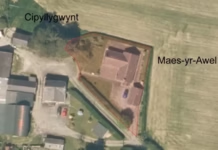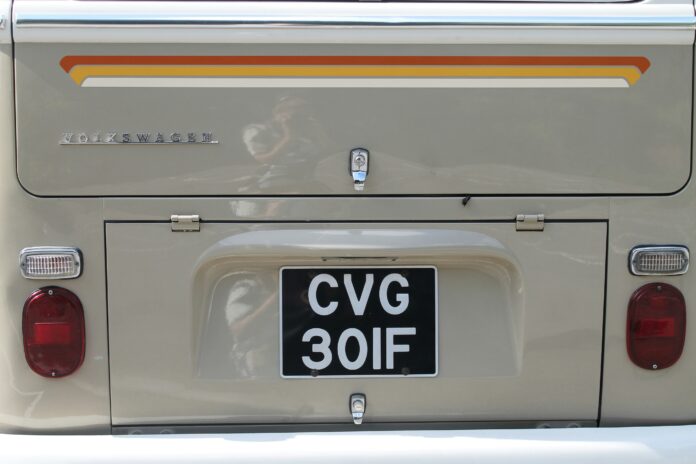The Process of Changing a Vehicle’s Registration: A Complete Guide
Changing a vehicle’s registration is a task that may arise for several reasons, including moving to a new location, purchasing a new vehicle, or updating personal details associated with the car. Regardless of the reason, it is important to understand the process to ensure everything is handled correctly and legally. In the UK, the process is relatively straightforward, but it requires some essential steps to be completed to ensure the registration is officially updated.
This guide will take you through the key steps involved in changing a vehicle’s registration, highlighting the documents required, the timeline for the process, and some tips to make the transition as smooth as possible.
Step 1: Determine the Reason for Changing the Registration
The first step in changing a vehicle’s registration is to determine the reason for the change. Some common reasons for updating a vehicle’s registration include:
- Change of Address: If you move to a new address and need to update your vehicle registration details, you’ll need to inform the DVLA (Driver and Vehicle Licensing Agency) of your new location.
- New Vehicle Ownership: When you purchase a new vehicle, you must update the registration to reflect your ownership.
- Name Change or Personal Details Update: If you’ve changed your name due to marriage, divorce, or any other reason, you’ll need to update the registration details on your vehicle.
- Number Plate Change: If you want to switch to a new number plate, either by purchasing a private plate or a replacement, you’ll need to update your vehicle’s registration details to reflect the change.
Once you know the reason for the registration change, the next step is to gather the necessary documentation to support the update.
Step 2: Gather the Required Documents
To update your vehicle’s registration, you will need to provide certain documents to the DVLA. The exact documents required may vary depending on the reason for the change, but typically, you will need the following:
- V5C (Vehicle Registration Certificate): This is the official registration document for your vehicle. It contains details such as the vehicle’s make, model, colour, and VIN (Vehicle Identification Number). The V5C is required for any changes to your vehicle’s registration.
- Proof of Identity: If you’re updating personal details (such as a name change), you may need to provide proof of identity, such as a driving license, passport, or marriage certificate.
- Proof of Address: When updating your address, you will need to provide proof of your new address. This could be a utility bill, bank statement, or tenancy agreement.
- MOT Certificate (if applicable): If your vehicle is over three years old, it will need to have a valid MOT certificate. If you’re updating the registration due to a change of ownership, the new owner may also need to provide a valid MOT.
Once you have these documents, you can proceed to the next step of the registration update process.
Step 3: Update the DVLA and Submit the Documents
The next step is to inform the DVLA about the change and submit the required documentation. This can be done in a few ways:
- Online: The easiest way to update your registration is by visiting the DVLA’s website. The online process is quick and simple, and you’ll be able to update most details, such as a change of address or name, without needing to visit a physical location. If you’re transferring or changing your number plate, you can also complete the change online, providing you have all the necessary information and documents ready.
- By Post: If you prefer, you can submit the required documents by post. This is typically necessary if you are changing ownership details or if you prefer not to handle the process online. You will need to send the completed V5C form and any supporting documents to the DVLA. The DVLA will process the request and send you the updated registration certificate.
- Through an Approved Supplier (For Number Plate Changes): If you are purchasing a new number plate or transferring a private plate, lots of services can help with the process. They can guide you through updating your registration details, ensuring that everything is done legally and that the new plate is correctly assigned to your vehicle.
Regardless of the method you choose, make sure to double-check the information you’re submitting to avoid delays. The DVLA will typically send your updated registration documents within a few weeks of receiving the request.
Step 4: Receive Your Updated Vehicle Registration
Once the DVLA has processed your request, you will receive your updated V5C document reflecting the new details. The time it takes to receive your updated registration can vary depending on the complexity of the change, but it generally takes around 2-4 weeks. If you’ve made changes online, you may receive the updated registration certificate more quickly.
For number plate changes, the updated V5C will reflect your new registration number, and you will be able to legally display the new plate. If you are receiving a new plate due to a change of ownership, you will also receive the new V5C that confirms you are the registered keeper.
Step 5: Update Your Vehicle Insurance and MOT Records
Once your registration has been updated, it’s important to inform your insurance provider of the change. If you’ve changed your address, name, or vehicle details, your insurance policy may need to be updated. Failing to inform your insurer about these changes could result in your policy being invalid or in higher premiums.
Similarly, if your vehicle has had a change of registration, ensure that your MOT records are updated. This helps to ensure that any future MOT inspections are linked to your vehicle’s correct details.
Additionally, if you’ve purchased a private number plate, be sure to notify your insurance provider of the change. Some insurance providers may ask for a copy of your new V5C to verify the new registration details.
Step 6: Display the New Number Plate (If Applicable)
If your registration change includes a new number plate, you will need to make sure that your vehicle displays the updated plates. Be sure to have the new number plates printed according to legal specifications, including the correct font, size, and character spacing. This is crucial to avoid fines or penalties for displaying non-compliant plates.
You can have your new number plates made by an approved number plate supplier.
Whether you’re updating your plates because of a move, a new vehicle, or a new private plate, ensure that the plates comply with UK standards. Companies like Regplates offer compliant, high-quality number plates for both standard and personalized plates.
Step 7: Monitor for Any Follow-Up Requirements
After completing the registration change process, keep an eye out for any further requirements. For example, if you’ve updated your address, ensure that you continue to receive any correspondence from the DVLA or other authorities regarding your vehicle. Additionally, you may need to ensure that your road tax is updated if the registration change involves a different vehicle or location.

| [donate]
| Help keep news FREE for our readersSupporting your local community newspaper/online news outlet is crucial now more than ever. If you believe in independent journalism,then consider making a valuable contribution by making a one-time or monthly donation. We operate in rural areas where providing unbiased news can be challenging. |



















